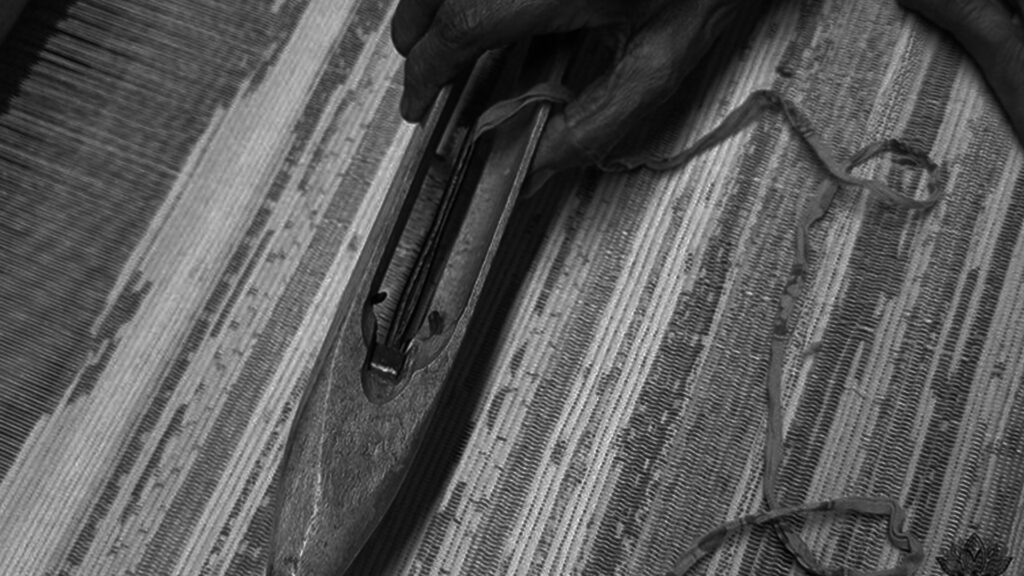
In the vast tapestry of global textiles, there’s one thread that stands out for its unique origin and sustainable ethos – Khesh. Originating from the skilled hands of Bengal weavers, Khesh is not just a fabric; it’s a testament to creativity, resourcefulness, and the timeless artistry of handloom weaving.
The Origins of Khesh:
Khesh has its roots deeply embedded in the rural landscapes of Bengal, where tradition meets innovation. The word “Khesh” itself translates to “torn” in Bengali, reflecting the very essence of this textile. What makes Khesh truly exceptional is its method of production – it’s the only textile in the world where upcycled torn fabric is used as yarn to weave new fabric.
The Art of Khesh Weaving:
The process of creating Khesh is a harmonious blend of craftsmanship and sustainability. Old, worn-out sarees or dhotis are collected from households, often destined for disposal. These discarded fabrics are meticulously sorted, torn into thin strips, and then spun into yarn. This yarn, imbued with the history and memories of its previous life, is then skillfully woven into intricate patterns on handlooms.
Sustainable Fashion at Its Finest:
At its core, Khesh embodies the principles of sustainability and eco-consciousness. By upcycling discarded textiles, Khesh not only minimizes waste but also preserves the rich cultural heritage of Bengal. Each piece of Khesh tells a story of renewal and reinvention, celebrating the beauty of imperfection and the resilience of tradition.
Versatile and Timeless:
Beyond its sustainable credentials, Khesh holds immense aesthetic appeal. Its unique texture, characterized by the interplay of different colored threads, lends a rustic charm to any setting. From vibrant home decor items like cushion covers and table runners to stylish accessories like bags and scarves, Khesh finds its way into various facets of contemporary living.
Preserving Tradition, Empowering Communities:
The revival of Khesh weaving not only sustains a traditional craft but also empowers local communities. In rural Bengal, where handloom weaving has been a way of life for generations, initiatives promoting Khesh provide livelihood opportunities and financial independence to artisans, particularly women.
Embracing Khesh in Modern Times:
In an age where sustainability is paramount, Khesh emerges as a beacon of hope for the fashion industry. Its rustic elegance and ethical production methods resonate with consumers seeking conscious alternatives to mass-produced textiles. As awareness grows, so does the demand for Khesh, fostering a renaissance of handloom weaving in Bengal and beyond.
Conclusion:
Khesh is more than just a textile; it’s a living legacy woven from threads of tradition, innovation, and resilience. In a world inundated with fast fashion and disposable trends, Khesh stands as a testament to the enduring beauty of craftsmanship and the power of sustainable practices. As we embrace Khesh into our homes and wardrobes, we not only adorn ourselves with exquisite fabrics but also contribute to a more sustainable and equitable future for generations to come.
